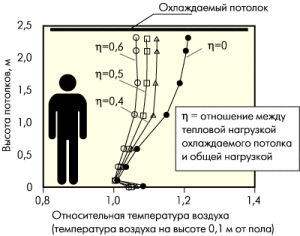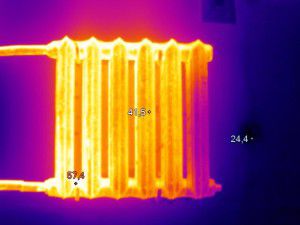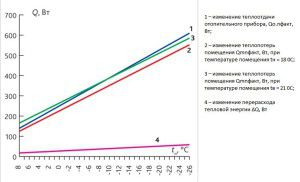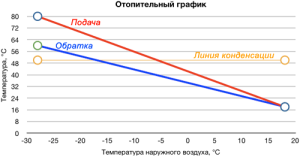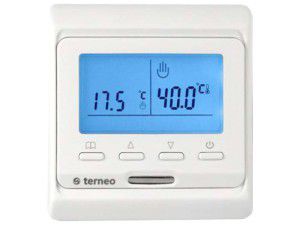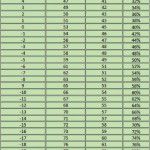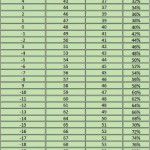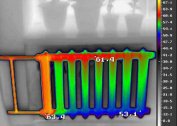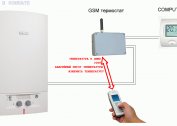Each heating system has certain characteristics. These include power, heat dissipation and temperature conditions. They determine the effectiveness of work, directly affecting the comfort of living in the house. How to choose the temperature schedule and heating mode, its calculation?
Temperature plotting
The temperature schedule of the heating system is calculated according to several parameters. Not only the degree of heating of the premises, but also the flow rate of the coolant depends on the selected mode. The same affects the running costs of heating maintenance.
The schedule of the heating temperature depends on several parameters. The main one is the level of heating of water in the highways. It, in turn, consists of the following characteristics:
- Temperature in the supply and return piping. Measurements are carried out in the corresponding nozzles of the boiler;
- Characteristics of the degree of heating of air indoors and outdoors.
A correct calculation of the temperature graph of heating begins with calculating the difference between the temperature of the hot water in the direct and supply pipes. This value has the following designation:
∆T = Tin-Tob
Where Tvh - water temperature in the supply line,To - the degree of heating of water in the return pipe.
To increase the heat transfer of the heating system, it is necessary to increase the first value. To reduce the flow rate of the coolant, ∆t should be minimal. This is the main difficulty, since the temperature schedule of the boiler heating directly depends on external factors - heat loss in the building, air in the street.
To optimize the heating power, it is necessary to insulate the exterior walls of the house. This will reduce heat loss and energy consumption.
Calculation of temperature
To determine the optimal temperature regime, it is necessary to take into account the characteristics of the heating components - radiators and batteries. In particular, specific power (W / cm²). This will directly affect the thermal return of heated water to the air in the room.
It is also necessary to make a number of preliminary calculations. In this case, the characteristics of the house and heating appliances are taken into account:
- Heat transfer coefficient of external walls and window structures. It must be at least 3, 35 m² * C / W. Depends on the climatic features of the region;
- Surface power of radiators.
The temperature graph of the heating system is directly dependent on these parameters. To calculate the heat loss of a house, you need to know the thickness of the outer walls and the material of the building. The calculation of the surface power of the batteries is performed according to the following formula:
Ore = P / Fact
Where R - maximum power, W,Fact - radiator area, cm².
According to the data obtained, the temperature regime for heating and a heat transfer schedule are compiled depending on the outdoor temperature.
To timely change the heating parameters set the temperature control of heating. This device connects to outdoor and indoor thermometers. Depending on the current indicators, the operation of the boiler or the volume of coolant inflow into the radiators is regulated.
The weekly programmer is the optimal temperature controller for heating. With it, you can automate the operation of the entire system.
Central heating
For district heating, the temperature regime of the heating system depends on the characteristics of the system.Currently, there are several types of parameters of the coolant supplied to consumers:
- 150 ° C / 70 ° C. To normalize the temperature of the water with the help of the elevator unit, it is mixed with a cooled stream. In this case, you can draw up an individual temperature schedule of the heating boiler for a particular house;
- 90 ° C / 70 ° C. It is typical for small private heating systems designed for heat supply of several apartment buildings. In this case, you can not install the mixing unit.
The responsibility of utilities is to calculate the temperature heating schedule and control its parameters. At the same time, the degree of heating of air in residential premises should be at the level of + 22 ° С. For non-residential, this indicator is slightly lower - + 16 ° C.
For a centralized system, drawing up the correct temperature schedule for boiler heating is required to ensure optimal comfortable temperature in the apartments. The main problem is the lack of feedback - it is impossible to adjust the parameters of the coolant depending on the degree of heating of the air in each apartment. That is why the temperature schedule of the heating system is compiled.
A copy of the heating schedule can be requested from the Management Company. With it, you can control the quality of the services provided.
Heating system
To make similar calculations for autonomous heating systems of a private house is often not necessary. If the scheme provides for indoor and outdoor temperature sensors - information about them will go to the boiler control unit.
Therefore, to reduce the energy carrier consumption, the low-temperature mode of heating is most often chosen. It is characterized by a relatively small heating of water (up to + 70 ° C) and a high degree of its circulation. This is necessary for an even distribution of heat across all heating devices.
To implement such a temperature regime of the heating system, the following conditions will be required:
- Minimum heat loss in the house. However, one should not forget about normal air exchange - the arrangement of ventilation is mandatory;
- High thermal efficiency of radiators;
- Installation of automatic temperature controllers in heating.
If there is a need to perform a correct calculation of the system, it is recommended to use special software systems. To calculate it yourself, you need to consider too many factors. But with their help, you can draw up approximate temperature graphs of heating modes.
- Schedule 150/70
- Schedule 90/70
- Schedule 80/60
- Chart 70/55
However, it should be borne in mind that an accurate calculation of the temperature schedule of heat supply is done individually for each system. The tables show the recommended values for the degree of heating of the coolant in the supply and return pipes, depending on the outdoor temperature. When performing the calculations, the characteristics of the building and the climatic features of the region were not taken into account. But even despite this, they can be used as a basis for creating a temperature graph of the heating system.
The maximum system load should not affect the quality of the boiler. Therefore, it is recommended to purchase it with a power reserve of 15-20%.
Tips for optimizing your heating performance
Even at the most accurate temperature schedule of boiler heating, deviations of calculated and actual data will be observed during operation. This is due to the peculiarities of the operation of the system. What factors can affect the current temperature regime of heat supply?
- Pollution of pipelines and radiators. To avoid this, periodically clean the heating system;
- Incorrect operation of control and shutoff valves.Be sure to check the health of all components;
- Violation of the mode of operation of the boiler - a sharp jump in temperature as a result - pressure.
Maintaining the optimal temperature regime of the system is possible only with the correct selection of its components. For this, their operational and technical properties should be taken into account.
Battery heating can be adjusted using a thermostat, the principle of which can be found in the video material:
